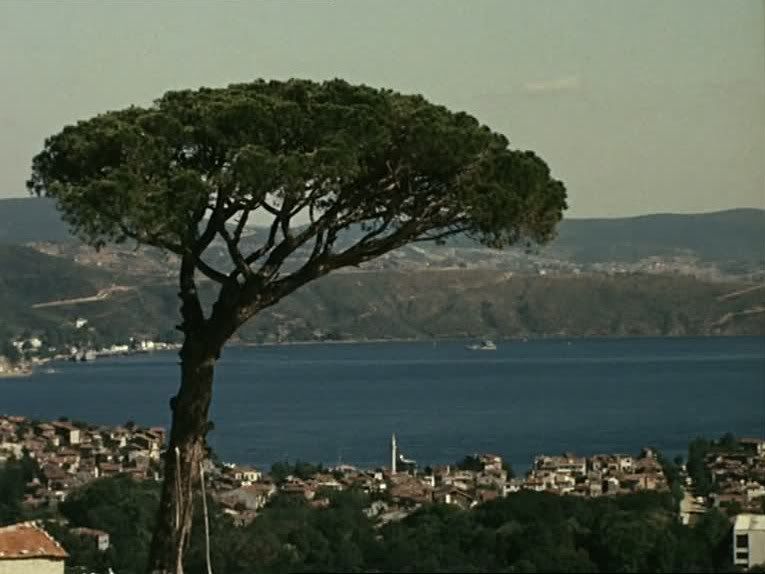
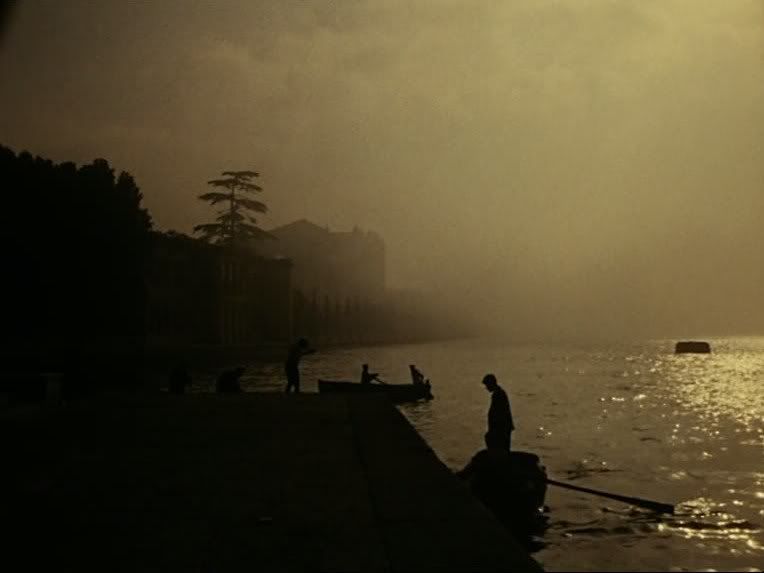
Though Maurice Pialat began making short films and documentaries in 1951, at the age of 26, it wasn't until 1968 that he completed his first feature, L'enfance nue. The years before this were a long period of experimentation, using whatever materials he could get with limited means to create a series of rough amateur works that both presaged and overlapped with the nascent French New Wave. This period was capped off by the director's 1964 trip to Turkey, where, using spare reels of film stock taken from Alain Robbe-Grillet, he made a series of six fascinating, poetic documentaries about the country. These Turkish films, each of them around 10-15 minutes long, represent the finest accomplishment of Pialat's early work, with the director turning his keen cinematic eye and feel for observation on this foreign land, its culture, its architecture and its history.
All of Pialat's Turkish films are uniquely interested in the country — especially Istanbul — as it was, not just as it is at the precise moment that Pialat is filming it. History informs these films in a big way, with the voiceover narration (which incorporates excerpts from various authors) introducing tension between the images of the modern-day city and the descriptions of incidents from its long and rich history.
The first film in the series, Bosphore, is also the only one that was shot in color, presumably because most of the stock that Pialat could scrounge up was black and white. Pialat makes good use of the color here; this is a strikingly beautiful film where each composition is richly layered and perfectly balanced. In the Istanbul harbor, boats drift by while a bright green flag flutters in the breeze in the foreground. Rippling light patterns are reflected off the water onto the red-brown wood of a ship's hull. Pialat foregrounds distinctively misshapen trees with the city stretching out beneath these bursts of green, a tightly coiled maze.
Most memorable of all are the hazy, foggy images of the Istanbul harbor, with black silhouettes of ships drifting through the thick air, shadowy figures working on the shore, while the voiceover speaks of "ghost ships" gliding through the fog. This port connects Turkey with the rest of Europe via ferries that continually make the trip back and forth. Turkey is in a unique geographical position, straddling Europe and Asia, bordering both southern Europe and the Middle East, and Pialat offers up hazy, almost mystical images of the port that provides these connections. The history of Europe's interactions with Turkey are a major subject of these films, drawing a contrast between Turkey's current place in the world and its ancient status as the center of the Ottoman Empire, which at one point represented a threat to Europe and a major flashpoint in the ongoing conflict between the forces of Islam and those of Christianity.
These themes are introduced in outline here; whereas the other Turkish films tend to be tightly focused on a single event or theme, Bosphore serves as an overall introduction to the series, a portrait of the city as a whole. At one point, Pialat draws a visual and verbal comparison between the minarets of Islam and the towers erected by the oil industry, suggesting an implicit connection between the two aspects of the Middle East most often emphasized by foreigners to the region. More than that, though, he's bridging the gap between past and present, between the old world of the Ottoman Empire and the new, modern world of industry, international trade and communion with Europe. Towards the end of the film, Pialat holds a long, arcing tracking shot from a boat as it glides past an ancient, crumbling cathedral surrounded with wooden scaffolds, a city's heritage under construction, the beauty of the old world peeking out from beneath the façade of modernity, the old and decaying being restored to some semblance of its former glory. It's an elegant encapsulation of the film's themes: the old restored, through modern means, to resemble a modern conception of what it might have looked like when it was new.
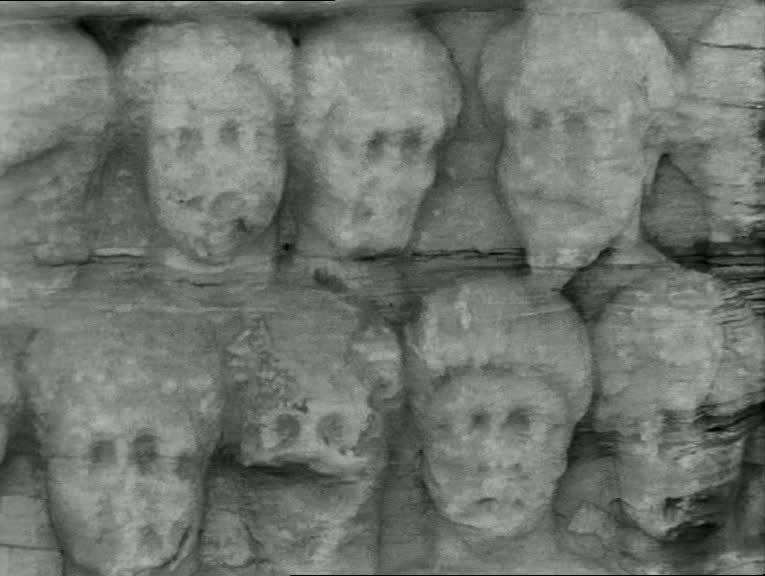
Byzance is a bleak, melancholy film about the history of religious conflict and conquest that characterized the relationship between the Middle East and Europe for so long. It is specifically about the Ottoman Sultan Mehmed II and his defeat of the Byzantine Empire at Constantinople in 1453, pushing the Roman Empire's reach back from the borders of the Middle East. The sounds of cannon fire, military drumming, and battle cries accompany the images of modern-day Istanbul, as the voiceover (assembled from texts by the Austrian writer Stefan Zweig) describes the battles and military maneuvers that led up to this decisive moment.
This film is about the ways in which history can be seen as a series of erasures, one event building on top of the others in never-ending layers to create the present. Pialat shows an Islamic mosque that, the voiceover says, was once a Christian cathedral, until the city was conquered, the church's Christian mosaics whitewashed from its pillars, the cross taken down from atop the dome, repurposed by the conquerors for their own religion. The victors get to define what lasts and what doesn't, what gets passed down to future generations and what gets wiped away, never to be seen again.
Istanbul is of course a perfect site for this kind of inquiry, since it has had such a long history of change and reversals, conquest and repurposing. Even the city's name is fluid, and Pialat shifts constantly (not just here, but throughout the Turkish series) between calling it Istanbul, Constantinople, and Byzantium, the name of the city before Mehmed II sacked it and absorbed it into his own empire. Pialat is acknowledging that his images represent only the top layer of history, the accumulated sediment of many centuries that has built to this precise historical moment, to this particular image. The film's final image is an especially poignant examination of the ways in which time shapes and reshapes a place's character, through processes both natural and human. Right at the end of the film, Pialat tracks along a wall of stone faces, starting with some that have been relatively well-preserved and gradually panning until the wall is increasingly smooth, the details of the faces eroded and erased, their features blank, lost to history.
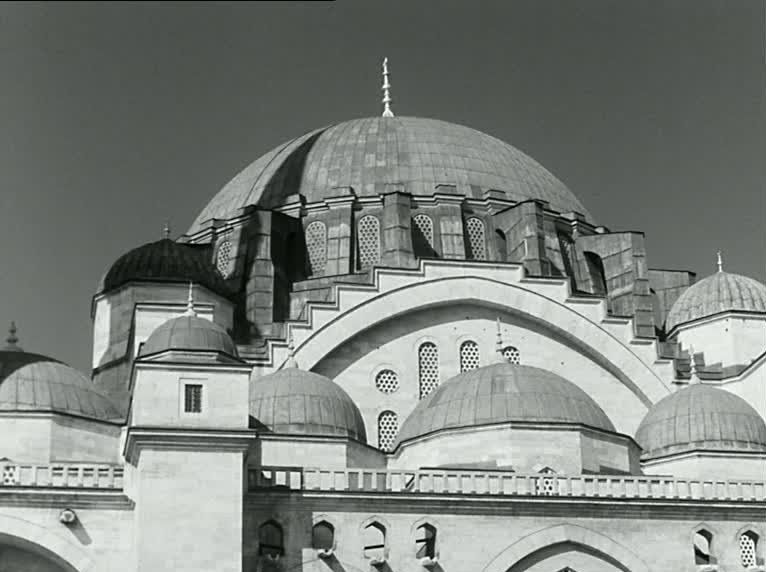
La Corne d'or is mostly concerned with religious ritual, examining the mosque (and former cathedral) discussed in Byzance. As a contrast against Istanbul's status as a center of historical religious conflict, Pialat — drawing here on texts by the French poet Gérard de Nerval — also describes the city as a place of strange ethnic and religious harmony, with representatives of various cultures and religions living in close contact. He emphasizes the city's hybrid culture, its blend of Southern European and Arab influences, reflected in both its people and its very construction.
Pialat seems fascinated by the architecture of Istanbul, and in this short especially he's expressing his love for the look of the city, its sprawling density and complexity. He composes several crisply edited montages that examine the city's architecture from multiple angles and perspectives, observing closeup details and cutting from there to the macro structures that form larger geometric patterns stretching out across the city. Pialat's images emphasize the design tension in Ottoman architecture between hard geometric lines and rounded domes, simultaneously suggesting rigidity and fluidity, contributing to the city's fractal-like networks of tightly packed buildings.
Of course, this density is also a reflection of the poverty that afflicts many of the city's people. At one point, the voiceover compares Istanbul to a stage set best admired from afar, without peeking backstage, because its rigorous beauty and historical richness obscures the poverty that is rampant in many of its neighborhoods. This passage has the feel of a self-correction, with Pialat acknowledging that his romantic, poetic images of the city's beauty risk obscuring some of the human dimensions of the people who live there.
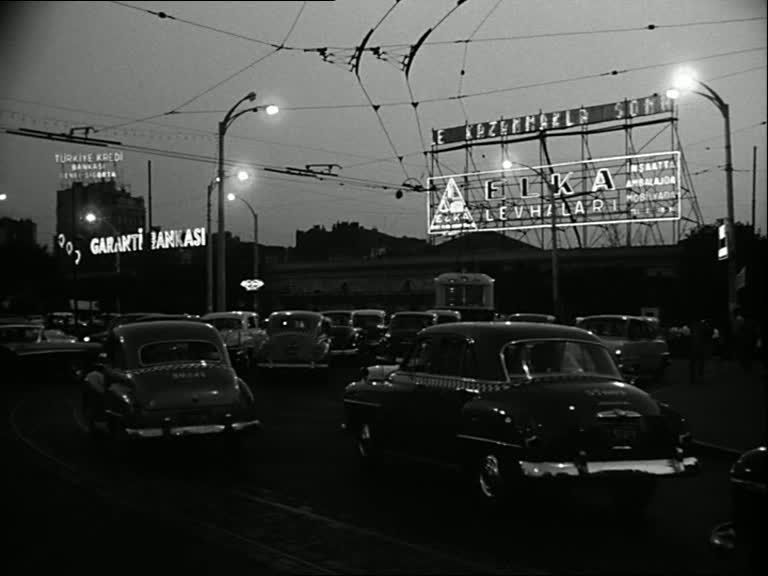
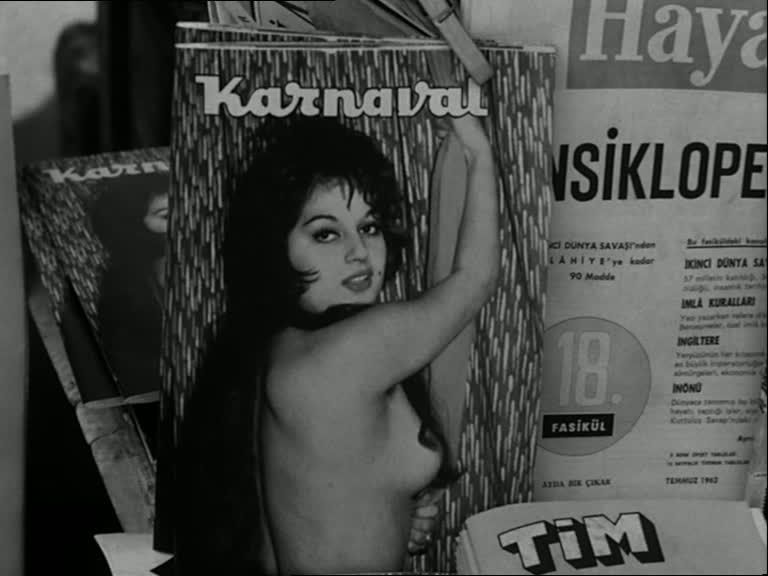
Istanbul is probably the most conventional documentary of Pialat's Turkish series, providing a general profile of the titular city, its different neighborhoods, and the different cultures and ways of living that coexist within its sprawling borders. As the other films in the series also suggest, Pialat sees Turkey, and Istanbul in particular, as a junction point between Europe and the East, between the old and the new, between history and modernity. That's the subject of this film as well, capturing the way that modern Istanbul is split between sections where it looks just as it did in Ottoman times, sections that are more European in character, modernized industrial districts, markets that have one foot in the old world and one in the new. In one early shot, Pialat captures the city at night, bathed in neon, crowded with cars that speed recklessly through streets not meant for such traffic, its modernity coexisting somewhat uncomfortably with all the ancient architecture and other reminders of its historical roots.
At one point, Pialat explores a market that was once the greatest in the world until an earthquake devastated it. This somewhat melancholy segment describes how the market was rebuilt in 1889, and now looks like a typical mall, full of cheap junk for tourists to buy. The voiceover says that, to really know what this grand market was once like, one can only rely on the romantic accounts of ancient travelers who witnessed it firsthand. The narration then falls silent as Pialat's camera observes the somewhat chintzy reality of the modern market, so different from its former glorious reputation. It's a subtly sad and ironic commentary on the limitations of the modern world: the supposed advances of progress don't always lead to something better, and the cost of Istanbul's place in the modern world is the loss of some of the things that once contributed to the city's distinctive character.
Pialat also comments upon the intrusion of a Western conception of sex: nudie magazines with naked women smiling from the newstands, large billboard advertisements with women in their underwear, selling sex to men, and burlesque shows with dancers in skimpy outfits, belly-dancing to Arab music, somewhere between a traditional performance and a strip show. This is probably the most explicit sign of the changes wrought in this culture by contact with the West: in a culture where women are only just starting to earn some independence, and many still wear veils and traditional garb, this highly sexualized, lurid imagery is nevertheless already starting to appear everywhere.

Maître Galip is the most poetic and powerful of Pialat's Turkish Chronicles, using the poems of Nazim Hikmet to accompany a series of evocative images of ordinary working class people in Istanbul. This was the film that Pialat himself claimed was the most complete realization of what he was aiming for with his Turkish documentaries. It's not difficult to see why this was his favorite: here he abandons the historical commentary and documentary observation of the other shorts in favor of an emotional emphasis on the lives of the poor and the unemployed.
The film's final section is accompanied by a poem in which the title character, Mr. Galip, wonders, at various points in his life, why he can't go to school, why his family's so poor, why he must work so hard in his father's shop, why his father has to close his shop when bigger factories are opened up in the town, and why he's perpetually out of work. It's a moving account of the struggles of the lower class that's as universal as it is specific to Istanbul or Turkey. At the beginning of the film, the narration starts with the local, observing how many factories are in Istanbul and yet how many people are out of work, then wonders how many factories are in the world, and how many men have no jobs everywhere.
In the final part of the film, as the narration walks through the stages of Galip's life, Pialat accompanies the lines with images of children, then teens and young men, and finally older men for the part of the poem when Galip realizes that he is 52 years old, two years older than his father was when he died, and yet no better off than previous generations, who also struggled in poverty. Pialat uses a lot of closeups throughout this film, strikingly composed images that focus on the faces of random people encountered in the streets.
As with the segment on the commercialized market in Istanbul, this film is dealing with the sadder fallout of modernization, as old family businesses shut down, replaced by factories where jobs are unstable and men are continually being laid off, their functions no longer necessary. The film is so striking because of the juxtaposition of Hikmet's poetic ruminations on unemployment and poverty with Pialat's crisp images of rundown neighborhoods and men stooped with hard labor. Pialat's pride in this film is well-justified: it is undoubtedly the best of his Turkish documentaries, dealing concisely and movingly with the human toll of the meeting between Europe and the East that Pialat sees in Turkey.
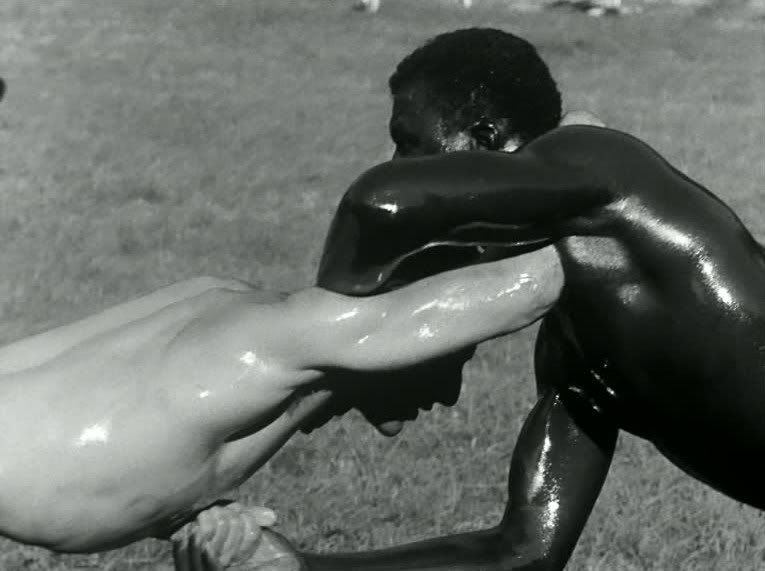
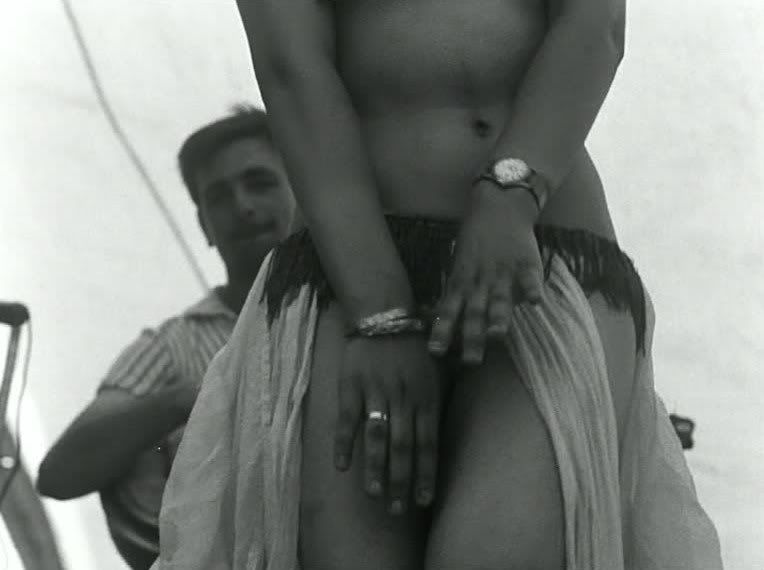
Pehlivan focuses on a three-day wrestling competition, an ancient tradition that dates back over a thousand years to the time of the Ottoman Empire, originating in the games the soldiers would play to entertain themselves in between battles. Maybe that's why there's more than a hint of homoeroticism in the way the wrestlers oil themselves up with grease, making sure to cover every inch of their bodies so that their opponents will be unable to get a grip. Pialat's closeups emphasize the men's muscular bodies jammed together and sliding off one another, posed in intimate, twisted arrangements, struggling desperately for a grip on each other's bodies. Arms are jammed down pants, one of the only places there's some potential for a handhold, and the whole thing is very suggestive and sensual, a form of intimate male contact that's sanctioned as a show of strength and masculinity.
These are the pehlivans, which the narration says means "wrestler, paladin, knight," all three meanings implied by the same word, connecting this sport showcase to the very real battles and conquests described in the earlier shorts in the series. Pialat contrasts all this "male exhibitionism" against the accompanying strip shows where curvy gypsy girls shake and dance in barely there bikinis, allowing their clothes to shake off their bodies, flashing the audience, smiling the whole time, while the men hoot and whistle. It's a pretty provocative parallel that Pialat is drawing here, suggesting that male sexuality and female sexuality have found very different culturally mandated outlets that nevertheless are somewhat similar in providing opportunities for the admiration of the human form. Just as the men display their muscular physiques when they wrestle, dressed only in their identical black, oiled-up pants, their bodies glistening as they roll around in the grass before a large and appreciative audience, the women display their bodies in a show that's framed quite differently but amounts to the same thing. As in many cultures, the male displays require some macho justification, while the women's shows are transparently sexual in nature, but the suggestion is that sport of this kind is just sex in disguise.
No comments:
Post a Comment